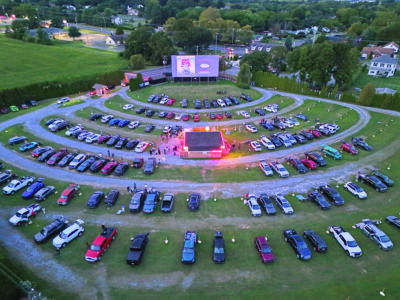Outdoors North: Mysteries of the heart and mind unfurl

JOHN PEPIN
“No time for a summer friend, no time for the love you send, seasons change and so did I, you need not wonder why,” – Randy Bachman and Burton Cummings
It was a strange and off-putting sequence of events that I encountered during what I presumed would be a casual afternoon respite, walking and casting for trout along some favored streams.
To describe the occurrences as strange is to say that nature provided me with experiences that were out of the ordinary. In some way, it seemed as though I was supposed to see these things and “learn” something from them.
That was the feeling I kept getting as each event unfolded in front of me, and that feeling remains with me as I type this account.
I drove down a county road headed for an old bridge I visited only sporadically. I wanted to see this place more often, but it is kind of out of the way from places I tend to travel.
Ahead in the distance, I saw what I thought was a bright-orange highway construction sign. I slowed down as I approached.
Instead of finding a crew working on or along the road, I discovered that the “sign” was instead the only tree in a stand of otherwise green-leafed maples that was shimmering brilliantly – ablaze in a fire of fall color.
I passed the tree and soon turned off the road to find the bridge.
The last time I was here, it was during springtime a few years ago.
It was a foggy morning when I had been out birdwatching and pulled over to the side of the road on a whim. I decided to take a few casts from the bridge into the deep and dark water flowing beneath me.
On the first cast, I let my lure sink to the bottom and then turned the crank on my reel one or two turns to retrieve the line. My lure was immediately struck by a big brown trout.
The fish fought hard and splashed the water several times. I hopped the metal guardrail next to the bridge and ambled down the grassy embankment to get closer to the water.
I don’t think I could have ever landed that 20-inch trout from the height of the bridge.
Standing in the mud along the river, I was able to reel in the big fish and take it home for dinner. It was delicious.
I was hoping for a similar scenario to occur on this sunny and summery autumn day.
Instead, when I looked over the concrete rail of the bridge, I saw that the deep, dark waters of the fishing hole had been filled with sand.
The much lower depths that remained were populated with weeds growing up from the bottom of the river. Sand was choking the river as far as I could see downstream.
The upstream side was deeper, but a few casts produced no bites.
Great changes obviously have taken place here since my last visit – likely the result of one or many great rains or spring runoff events that changed the complexion and composition of the stream.
A few minutes later, I was driving down a gravel road under a canopy of hardwood trees. Very few of the leaves here were other than summer green.
I pulled over at another bridge to check the water level.
It was low, with the current slowed in places where there used to be swift motion. I didn’t bother to cast there and moved on.
The road was dry, and my vehicle kicked up dust behind me.
In a place where a small creek crossed under the road through a metal culvert, I noticed the plants were towering along the creek sides, with barely a view of the shallow waters remaining.
I soon stopped at yet another river bridge.
In contrast to my other stops and observations, the river bottom here had been scoured deep by water flows, leaving a decided depth to the water that hadn’t been here previously.
I took a cast upstream and immediately got a quick bite and release.
Several more casts produced flat nothing.
As I back casted my lure under the bridge, I leaned over the concrete railing to see if I could see my lure. I couldn’t.
But what I saw instead was immediately jarring and unexpected.
Someone had thrown a half-dozen salmon carcasses into the water to rot.
These big fish weren’t caught here but were dropped over the side of the bridge by a passerby. Whoever had done this had cut fillets out of the sides of the salmon before discarding them.
My mind immediately thumbed through its index cards of past events to a time probably close to 30 years ago.
Much like I had done on this day, back then, I had stopped at the bridge to experience a few moments of divine peace and serenity here along the river.
Past the guardrail on the downstream side of the road, someone had dumped a pile of Canada goose carcasses. I reported the findings to a conservation officer who told me later that the meat had been cut out of those birds.
Looking eye-to-eye at the salmon carcasses in the water below me, I wondered whether the person who dumped the geese might be the same person who dumped the salmon, all these years later.
It was strange and sickening.
I walked over to the other side of the bridge and decided to continue through the grass toward a fishing hole I have enjoyed over the years. The grass here had been flattened by people, likely anglers.
At an old railroad trestle that towered over the river, I slid past overgrown red-twig dogwood and other bushes to reach my favorite place to stand and cast – on a concrete platform that was part of the bridge footings.
As I put my back to the concrete footing and moved my feet closer to my casting spot, I looked down and saw something dusty and brown with two eyes looking up at me.
By the coloration and the location under a bridge, I immediately thought it was a brown bat. But closer inspection revealed that it was instead an apparently parched, fist-sized American toad.
I used my boot to gently turn the toad over. As I did, he moved a few inches away from me, leaving a trail of blood.
As I began taking unsuccessful casts down the river, I kept glancing down at the toad to see what it was doing. After inching closer to the edge of the concrete platform, the toad plopped into the water.
I saw the toad kicking its legs in the water and attempting to use its front legs to direct itself. It appeared that one of the toad’s arms was missing or maimed.
My mind raced over numerous questions centered on how had the toad had gotten to where I found it under the bridge and how it became injured.
Had it fallen from above?
Had a snake or a bird attacked it, and it got away?
It was doubtful I would ever know.
I also thought about how I never would have found the toad had I not decided to come down to this spot. It likely would have died there lying on its back.
When I left, the toad was alive among green grass in the shallows of the river along the shoreline.
The next day, as I entered the door to my office building at work, I spotted something on the exterior wall of the building, close to a corner. It was a brown-colored bat roosting in the shade afforded by the overhanging roof.
Again, my mind tumbled back in time to recollect the last time I had seen a bat roosting on the side of a building. It was also about 30 years ago and the building was a supermarket I was walking into.
I was struck by how I thought the toad had been a brown bat but wasn’t. And now, there was a brown bat in front of me, only the second one I’ve spotted in this manner in a generation.
I am not sure how all these things fit together or if they even do – the river, the fiery tree, the salmon, the toad and now, the bat.
My initial impression is maybe this is some kind of natural essay or thesis on life and death, beginning and ending, the passage of time and the natural progression or continuation and discontinuation of things.
One thing I am clear on with certainty is that things like this don’t happen frequently on my ventures into nature. Perhaps that is why these events seem to have a greater meaning to me, though I remain unclear what that meaning is.
I have one more thought about this.
This past week, I unexpectedly came across one of my dad’s picture identification cards for medical services when I was searching for something else.
Seeing that relatively young face and his dark, black hair struck me instantly. I felt emotional about missing him. He died in summertime 2008.
Seasons changing, strange days to behold.
Mysteries of the heart and mind unfurl.
Outdoors North is a weekly column produced by the Michigan Department of Natural Resources on a wide range of topics important to those who enjoy and appreciate Michigan’s world-class natural resources of the Upper Peninsula.




